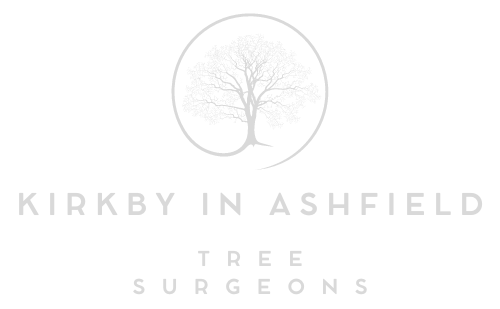How to Tell If a Tree’s Crown Is Overgrown or Damaged
When it comes to tree care, one of the most critical aspects is maintaining the health and safety of the tree’s crown. The crown of a tree, made up of the branches, leaves, and twigs, plays a vital role in the overall health of the tree and its surroundings. Overgrown or damaged crowns can pose risks to the tree itself, nearby structures, and even people. Recognising the signs of an overgrown or damaged crown early on can help prevent major issues down the line, including structural damage or even tree failure.
In this blog post, we’ll explore how to identify if a tree’s crown is overgrown or damaged and what steps you can take to address the issue.
1. Excessive Branch Growth
An overgrown tree crown is often characterised by excessive or uncontrolled growth. Trees naturally grow, but when the crown becomes too dense, it can lead to problems. Overgrown branches can obstruct pathways, block light from entering nearby plants, and interfere with buildings or power lines.
How to Spot It:
- Look for branches that are growing too close to buildings, fences, or utility lines.
- Notice if the tree’s crown is spreading beyond its intended area, causing it to encroach upon other plants or structures.
- Pay attention to the density of the crown, as an overly dense tree crown can restrict airflow and sunlight from reaching the tree’s interior, causing it to become unhealthy over time.
What to Do:
If you notice these issues, it might be time to call in a professional tree surgeon to perform a crown reduction or thinning, which will help to control the tree’s growth and improve its health.
2. Broken or Cracked Branches
Tree branches can become damaged due to storms, extreme weather conditions, or simply from natural ageing. Broken or cracked branches can pose a significant threat to the safety of your property, especially if they are high up in the tree’s crown.
How to Spot It:
- Look for broken or hanging branches that could fall and cause damage.
- Check for splits or cracks along the length of branches.
- Pay attention to areas where bark is missing, as this is often a sign of damage or disease.
What to Do:
Damaged or broken branches should be removed immediately by a professional. If left unattended, these branches can weaken the overall structure of the tree and increase the risk of larger branches falling, which could cause harm or damage to nearby property.
3. Lack of New Growth or Sparse Foliage
A healthy tree crown should show signs of consistent new growth, particularly during the growing season. Sparse foliage or a lack of new growth can indicate that the tree’s crown is either overgrown, stressed, or suffering from disease.
How to Spot It:
- Look for areas of the tree where there are fewer leaves or twigs than usual.
- Check for brown or yellowing leaves, which could indicate stress or disease in the tree.
- If only one side of the tree is showing growth, it could be a sign that the crown is imbalanced or damaged.
What to Do:
If you notice these signs, it’s essential to consult with a tree surgeon who can assess the health of the tree and determine whether it requires crown thinning or disease treatment.
4. Overhanging Limbs
Limbs that hang too far over structures, pathways, or other trees can present a safety hazard. These overhanging limbs can break off, causing significant damage to whatever is underneath. It is essential to keep overhanging branches under control to avoid potential accidents.
How to Spot It:
- Notice if branches are hanging too far over buildings, fences, or power lines.
- Look for any limbs that could cause obstruction or safety hazards, especially near walkways or roads.
What to Do:
Overhanging limbs should be professionally trimmed back to a safe distance. Regular trimming can prevent these limbs from becoming a hazard to your property or the surrounding area.
5. Signs of Disease in the Crown
A damaged or diseased crown often shows up with visible symptoms such as discoloured leaves, premature leaf drop, or black spots. Diseases like powdery mildew, fungal infections, or pests like aphids can cause the tree’s crown to deteriorate over time.
How to Spot It:
- Look for wilting, yellowing, or prematurely falling leaves.
- Check for visible fungal growth or black streaks along the branches or leaves.
- If the crown seems to be losing its density or shape, this may be a sign of a deeper issue such as disease or infestation.
What to Do:
Diseases and pests need to be addressed promptly by a tree surgeon to prevent the spread of infection to the rest of the tree. Treatment may include trimming affected areas, applying fungicides, or even replacing parts of the crown if the damage is extensive.
Conclusion
Recognising the signs of an overgrown or damaged tree crown early can save your tree and property from further harm. Regular tree care, including pruning, trimming, and the treatment of diseases, is essential to maintaining the health of your trees. If you’re unsure about the health of your tree’s crown or notice any of the warning signs mentioned above, it’s crucial to consult with a professional tree surgeon.
At Kirkby in Ashfield Tree Surgeons, we are experienced in handling all types of tree care, from crown reduction to tree removal. Our team is here to ensure the health and safety of your trees. Contact us today to discuss your tree care needs and book an appointment for a professional assessment.
Call us on: 01623 700 895
Click here to find out more about Kirkby in Ashfield Tree Surgeons
Click here to complete our contact form and see how we can help with your trees needs.

